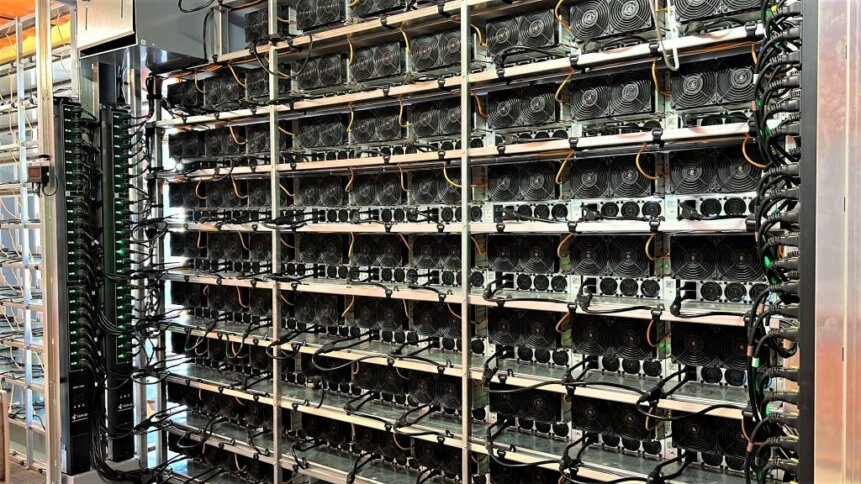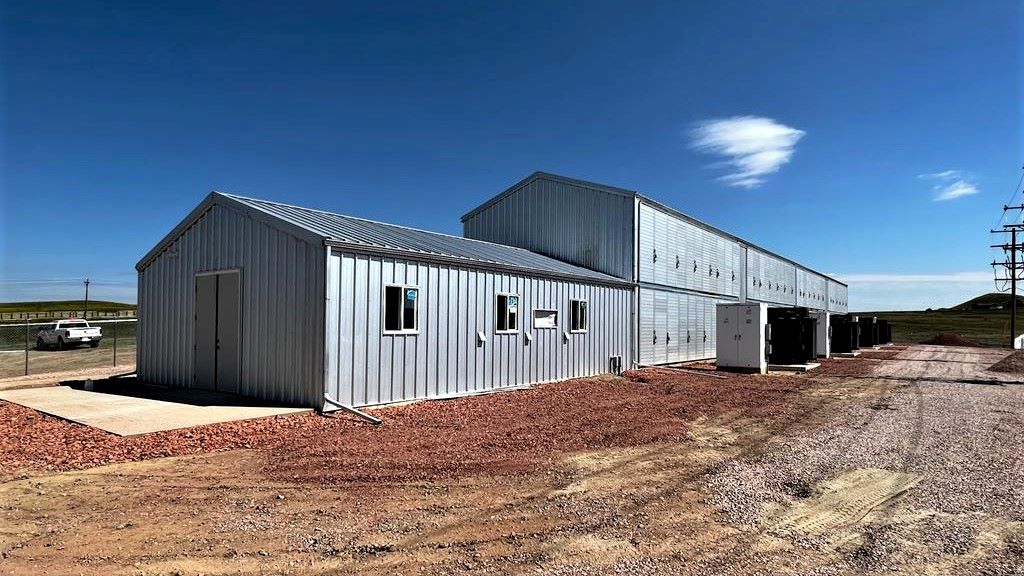BTC data centers: market forces and the drive for greater efficiency

|
Getting your Trinity Audio player ready...
|
Mining Bitcoin on a laptop is a great way to learn more about how decentralized cryptocurrencies work. But it won’t make you rich. Crypto hobbyists report Bitcoin earnings equivalent to just a few cents a day. And even if you scale this up by adding tens of GPUs to your home setup, you’ll still only push those takings into single dollar digits. The reality is that crypto mining has entered its industrial phase. And that begs the question – will market forces make BTC data centers more efficient?
Phil Harvey – CEO and founder of Sabre56, a hosting provider and digital asset project management consultant – remembers the early days of crypto when mining was done in the basement. And, as the sector has scaled up, he’s been working with clients to make their operations more efficient, applying lessons in project planning and implementation learned from a previous career in the military.
Harvey remains intrigued by the possibilities of distributed ledger technology and appreciates that more needs to happen to bring the concept into the mainstream. “We should definitely try to understand its use case better and not be afraid of the change,” he told TechHQ.
Enabling Bitcoin technology
Sabre56 sees itself as an enabler of Bitcoin technology, helping customers to build Bitcoin mining farms by bringing design, project, and cost management expertise to the table. And the company has delivered installations at sites across North America and in the Nordics.
What’s more, the Dubai headquartered firm has taken things a step further and is establishing hosting facilities of its own. “The plan was always to evolve from being a consultant to practicing what we preach,” Harvey explained.
Speaking with TechHQ it was clear that he wants to change the perception of crypto mining as an activity that’s wasteful of energy and causes damage to the environment. Having people align to standards and run Bitcoin mining operations more professionally will help.
Sabre56 is looking at ways of implementing benchmarks that both itself and others can follow – examining how operations can become more efficient with what they have. As mentioned, there are market forces to consider too, which could end up putting all but the most energy-efficient and well-optimized operations out of business.
Popularity of BTC data centers
The popularity of BTC data centers comes down to the odds of successfully mining Bitcoin. When miners solve the puzzle of finding a low-numbered hash of the next-in-line block of digital cryptocurrency transactions, they are rewarded with a few Bitcoin for their efforts. But the chances of success are incredibly low, so much so that winning the lottery feels like a done deal by comparison.
Bitcoin miners can boost their odds of receiving a reward by running multiple machines and taking trillions of guesses. However, while the chance of success goes up, so does the electricity bill. And when Bitcoin miners shop for hosting facilities for their rigs, one of the major items on their wish list is cheap power.
Last month, Sabre 56 announced that it had been awarded a five-year deal with Bootstrap Energy to provide miner operations at the 300MW Saxet Energy Park in southern Texas, US. The area is home to gigawatts of wind power, and energy management at the site will be designed to pass electricity cost savings onto clients.

Neat and tidy operations: Sabre56-hosted crypto mining facility in Wyoming, US. Image credit: Sabre56.
But it’s not just crypto miners that may benefit from state-of-the-art BTC data centers. Large-scale Bitcoin mining facilities give power companies a buyer of last resort when wind and solar energy generation surges. Rather than having to dump the electricity, energy firms can be confident that crypto miners will be glad of the windfall.
Also, because it’s possible to pause crypto mining operations, BTC data centers can help to buffer the grid. For example, if electricity demand spikes in the neighborhood, the computing processes could, in principle, spin down to reduce the facility’s energy footprint and free up power. And this points to a key operational difference between crypto mining sites and regular data centres, which need to be up 24/7.
In fact, there’s an argument to be made that mining farms motivate energy suppliers to upgrade infrastructure, with everyone benefiting from a more stable power grid. Texas Governor Greg Abbott has reportedly been thinking along these lines, but it’d be wide of the mark to say that everyone is happy to open their arms to crypto miners.
Longer term, excess power could be used to drive electrolyzers and create green hydrogen rather than support blockchain calculations that have less tangible benefits for society. Also, crypto mining is noisy and unpopular with residents looking for peace and quiet. And the objections don’t stop there.
But when it comes to the energy mix consumed by BTC data centers and other crypto mining operations, there’s evidence that facilities are ahead of the curve compared with local averages. For example, the Bitcoin Mining Council – which claims to represent 43% of the cryptocurrency’s global mining network – writes that the electricity being used comprises a 63.1% sustainable power mix, according to its H1 2023 member survey.
Using Electricity Maps, which visualizes the carbon intensity of electricity being used worldwide, it’s possible to compare crypto mining to electricity consumption in general. For example, at the time of writing, 51% of electricity being consumed in the UK is from renewable sources. In the US, the Electric Reliability Council of Texas is providing 28% renewable power. And the only regions with a sustainable power mix above crypto mining’s 63.1% are Austria; the Nordic countries of Norway, Sweden, and Iceland; Germany; Canada; Brazil; Uruguay; plus pockets of the US, such as the City of Tacoma, and sources of Federal Hydropower.
Given the importance of cheap power to the economics of crypto mining and noting that the falling cost of wind and solar are fueling the rise of renewables as the world’s cheapest source of energy, Electricity Maps could just as easily function as a guide on where to site your next BTC data center.
And there are some pioneering examples. We’ve already highlighted Sabre56’s mission to make the sector more efficient. But it’s not the only industry player to recognize where the cryptocurrency sector needs to get to. TeraWulf – a vertically integrated Bitcoin miner – has multiple zero-carbon sites, which target places with an excess supply of energy, not much demand, and limited transmission opportunities.
Its Lake Mariner facility serves as a sink for abundant hydropower and its Nautilus Cryptomine is said to be North America’s first nuclear-powered Bitcoin mining facility.
The company points to the role that BTC data centers can play in giving power firms a guaranteed buyer at the time of energy production, as well as helping to meet other expenses. “That customer adds to the denominator and allows you to amortize the fixed costs of the system over a larger base,” said Nazar Khan, one of TeraWulf’s co-founders and its COO.









